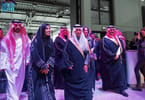CEDAR PARK, TX – Firefly Space Systems, the Texas-based developer of dedicated launch vehicles for the small satellite market, announced today that it has successfully tested its first rocket engine, Firefly Rocket Engine Research 1 (“FRE-R1”).
“The successful testing of our first engine represents a quantum step in the technical maturation of our company. We have demonstrated that our core engine design can reliably start, stop and operate at a steady state without combustion instabilities,” said Firefly Co-Founder and CEO Dr. Thomas Markusic.
Firefly is developing one combustor design that will be utilized to power both stages of their small-sat launcher – “Firefly Alpha.” The Alpha upper stage will utilize an engine (FRE-1) with a single combustor, whereas the first stage engine (FRE-2) will use an array of twelve of the same combustors arranged in an annular aerospike configuration.
FRE-R1 is a propulsion pathfinder for both stages of Alpha. It operates using LOx/RP-1 propellants, but the basic combustor design can utilize either methane or RP-1 fuels. The upper stage variant of the engine (FRE-1) will produce 7,000 lbf thrust, and the first stage cluster used in FRE-2 will produce 125,000 lbf thrust.
The first test series successfully demonstrated startup, shutdown, and steady state combustion. The test also served to prove the complete functionality of Firefly’s new test site. Upcoming engine tests will emphasize performance tuning and longer duration “mission duty cycle” runs. The first hot-fire tests of the FRE-2 aerospike engine are expected to take place in early 2016.
“In only fifteen months, we have built our Texas team, constructed state-of-the-art engineering and test facilities, designed a complete rocket (Alpha) to PDR level, and built and tested key vehicle technologies, such as the FRE-R1 engine,” added Markusic.
“I’m incredibly proud of the innovative and hard-driving spirit of the Firefly team. They are smart, hard-working and building momentum in hardware development, which will carry Firefly to space in short order.”
WHAT TO TAKE AWAY FROM THIS ARTICLE:
- The Alpha upper stage will utilize an engine (FRE-1) with a single combustor, whereas the first stage engine (FRE-2) will use an array of twelve of the same combustors arranged in an annular aerospike configuration.
- The upper stage variant of the engine (FRE-1) will produce 7,000 lbf thrust, and the first stage cluster used in FRE-2 will produce 125,000 lbf thrust.
- “In only fifteen months, we have built our Texas team, constructed state-of-the-art engineering and test facilities, designed a complete rocket (Alpha) to PDR level, and built and tested key vehicle technologies, such as the FRE-R1 engine,”.






















